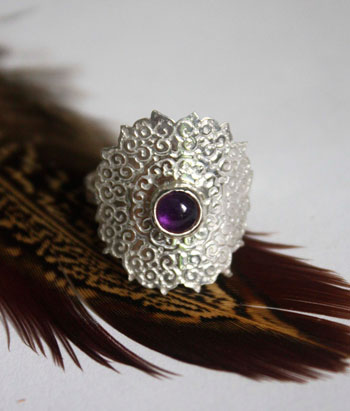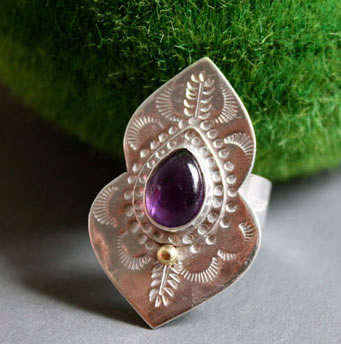- Jewelry
- Inspiration
- Our imagination
- Birthstones
- Celebrating with Eternal Flowers
- Druids and druidesses
- Flower meanings
- History, archeology jewelry
- History and healing properties of metals
- History and healing properties of stone
- Illumination jewelry
- Japanese symbols
- Maya calendar jewelry
- Stone color symbolism
- Stones catalogue
- Wedding anniversaries
- Searches a theme on the site
- Good Deals
- Paintings
- About
- Contact
JEWELRY
- Anklet
- Bracelets
- Brooches
- Cufflinks
- Earrings
- Pendants & Necklaces
- Rings
- Draw your jewelry
- How to clean your jewel
- Metal we used
INSPIRATION
- Our imagination
- Birthstones
- Celebrating with Eternal Flowers
- Druids and druidesses
- Flower meanings
- History, archeology jewelry
- History and healing properties of metals
- History and healing properties stones
- Illumination jewelry
- Japanese symbols
- Maya calendar jewelry
- Stone color symbolism
- Stones Catalogue
- Wedding anniversaries
- Searches a theme on the site
Amethyst: history, healing properties and lithotherapy

Amethyst properties

"Amethyst", from the Greek "améthystos" (not-intoxicated), derives its name from its distinctive color, which evokes diluted wine. This name is rooted in the ancient belief that amethyst could protect against drunkenness. Sometimes called "lavandine", its unique violet hue, ranging from pale lavender to deep purple, is due to the presence of ferrous ions and traces of manganese. This stone is a macrocrystalline variety of quartz, one of the most common forms of crystalline minerals.
Resistant to acid, amethyst has a hardness of 7 on the Mohs scale, making it durable and ideal for jewelry. When heated above 300 degrees Celsius, it can reveal shades of brown, orange, or green, resulting from thermal discoloration and adding a fascinating chromatic diversity to its properties. These color changes are caused by alterations in the stone’s crystalline structure.
History, legends and beliefs about the amethyst
Amethyst has played a prominent role in jewelry-making across various civilizations, once rivaling diamonds in value. However, its prestige diminished with the massive discovery and export of deposits in South America, leading to a significant drop in its price. This shift democratized access to the gemstone, making it more available while preserving its aesthetic appeal.
In ancient Egypt, amethyst was highly valued for carving seals, which were used to stamp important documents. Egyptian warriors also wore amethyst amulets to ward off fear and protect their bravery in battle.
According to Greek mythology, Dionysus, the god of wine, pursued the young maiden Amethystos, who had vowed to remain chaste. To protect her from his advances, the goddess Artemis transformed her into a white stone. In sorrow for his attempted seduction, Dionysus poured wine over the stone, giving it its iconic purple hue. This legend associates amethyst with moderation and purity.

Another version of the Greek myth tells that Dionysus, angered by human insults, sent his tigers against Amethystos. She prayed to Artemis for protection and was transformed into white crystal. To repent, Dionysus poured wine over the crystal, giving it its characteristic hue. This story further reinforces amethyst’s protective nature and its association with repentance and redemption.
Amethyst was especially dedicated to Artemis, the Greek goddess of the hunt, adding a divine dimension to this gemstone, symbolizing both protection, repentance, and mythical beauty.
In Roman mythology, amethyst was dedicated to Diana, the goddess of the hunt, and was associated with protection and nature.
The Greeks and Romans believed that amethyst-adorned cups helped them resist intoxication, which added a protective element to their festivities.
For the Hebrews, amethyst was the ninth stone on the breastplate of the high priest, representing the tribe of Ahlamah, and also adorned the gates of the New Jerusalem. This highlights its importance in religious and spiritual contexts across different cultures.
In the Middle Ages, the Church adopted amethyst as a symbol of renunciation of worldly goods, divine obedience, and chastity. Cardinals and bishops often wore rings set with amethyst, symbolizing their commitment to faith and sacred values. The purple color of amethyst was associated with the blood of Christ and His ultimate sacrifice for humanity, adding spiritual depth to this stone.
In popular belief, amethyst was also considered a powerful protector against betrayal and the harmful influences of witchcraft and black magic. It was thought to have the power to shield its wearer from unseen dangers and occult forces, further enhancing its reputation as a beneficial talisman.
Mines: Russia, Madagascar, France, Brazil and Uruguay.
Healing properties and benefits of the amethyst
Throughout human history, man has attributed various healing properties, virtues, and beliefs to amethyst. The information presented here is shared for cultural and historical purposes, to illustrate the symbolic relationship between this stone and man throughout time and civilizations. It does not constitute a therapeutic or medical recommendation.

- Amethyst is renowned for its soothing properties that help alleviate physical pain and provide relief during times of anxiety. This gemstone is often used for its calming effect on the nervous system, aiding in the reduction of emotional tension and fostering a state of inner tranquility.
- Endowed with balancing power, amethyst acts as a protective shield for memory and mental well-being. It is believed to create harmony by dispelling negative energies, thus enhancing concentration and mental clarity. This stone is frequently utilized in meditation practices to promote emotional and mental equilibrium.
- Amethyst has the ability to transform an unpleasant atmosphere into a more pleasant one by bringing positive energy to its surroundings. It is often placed in living or working spaces to encourage a climate of peace and serenity.
- Its relaxing vibration helps reduce muscle tension and relieve blood pressure. This stone is sometimes used to support relaxation and stress reduction, contributing to overall physical well-being.
- By promoting balance in the body, amethyst prepares a conducive environment for restorative sleep. It is commonly placed under the pillow or near the bed to help improve sleep quality and combat insomnia.
- The benefits of amethyst extend to various health issues, such as heart disorders, asthma, diabetes, and arthritis. Amethyst is considered to have versatile healing properties in lithotherapy practices.
- Amethyst is also used to prevent depressive states and offer support to women facing fertility issues. This stone is seen as having a stabilizing effect on emotions and potential support in fertility efforts.
- In children and animals, amethyst is reputed to calm hyperactivity and provide a soothing influence on their energy. It is sometimes used in family environments to create a calm and serene atmosphere.
- Finally, amethyst is known to stimulate hormone production and support the optimal functioning of the endocrine glands. It is occasionally used to aid hormonal balance and the regulation of bodily processes.
 Please note that all healing properties attributed to stones come from ancient traditions and various cultural sources. This information is provided for informational purposes only and does not constitute medical advice. In case of any health concerns, it is recommended to consult a qualified professional.
Please note that all healing properties attributed to stones come from ancient traditions and various cultural sources. This information is provided for informational purposes only and does not constitute medical advice. In case of any health concerns, it is recommended to consult a qualified professional.
Amethyst jewelry samples
To learn more about litotherapy, we recommend you the following books:























